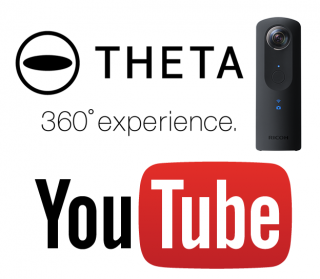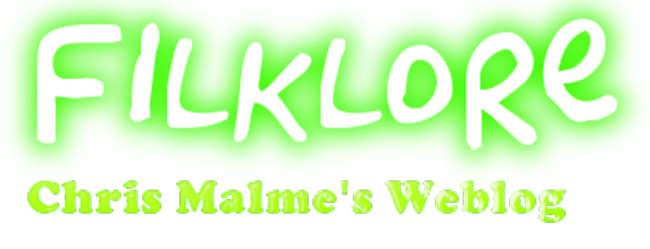 A combination of changes at YouTube and Ricoh’s new video driver (UVC Blender) now means that it is straightforward to stream 360° video live.
A combination of changes at YouTube and Ricoh’s new video driver (UVC Blender) now means that it is straightforward to stream 360° video live.
I’ve experimented a little with it, and am not yet sure if it is good enough for what I want to do with it. The picture is what it has always been – not brilliant, but ok; but on Live streaming, I’ve experienced some very poor sound; worse than when just uploading video, and irrespective of whether I use the camera’s microphone or external mikes.
I shall continue to experiment, but I have been asked enough times for how to do it, that I am going to go over the whole process, beginning to end, here; so all I have to do in future is point people at this page.
- Download and install the appropriate THETA UVC Blender software. This can be found on https://theta360.com/uk/support/download/ under “Live Streaming App”. In fact, app is a bit of a misnomer, as it doesn’t install an exectuable application on your machine, it really acts far more like a video driver. Opinions differ whether you need to reboot or not afterwards. I suggest you reboot anyway.
- Turn on your Theta S camera by holding the photo/video mode button, while pressing the start button. This puts you into Live mode, and you will see the words Live appear on the front of the camera.
- Connect to your computer by USB cable.
- (optional) Test the setup by running a local media player that lets you select a video source. I use VLC media player (for Windows). Select as source (or “video device name”) “Theta UVC Blender”. Do not select the camera. You should see an equirectangular view from your camera (it won’t be 360° at this point, don’t worry about that!). If you see a fisheye view, then that is the direct camera feed – recheck again that you are using “Theta UVC Blender”. If you see a black screen with “Theta UVC Blender Status: 0x800705AA”, then either your camera isn’t connected, or it isn’t in Live mode.
- Log on to YouTube, then navigate to Creator Studio, either via menus (click on your image on right hand side) or simply: https://www.youtube.com/dashboard. (You may need to sign up to Creator Studio first, I can’t recall; but it should tell you.)
- Click on Live Streaming, then Events. Ignore “Stream Now (Beta)” – that doesn’t currently work with Theta, as far as I know.
- It will probably tell you “You don’t have any upcoming events”. Click on “Schedule a new event”.
- Type in a title – this is mandatory.
- Ensure Quick is selected under Type.
- Go to Advanced settings and scroll down and check the box labelled “This live stream is 360°”. (without this, it will appear Equirectangular).
- Press Go Live Now.
- You will get a dialog saying “Ready to go!”. Click OK.
- A new popup window will appear. This is the Google Hangouts screen. (We are feeding our camera to Google Hangouts, then feeding Hangouts to Youtube.)
- You may see an image straight away. If not, or if it is the wrong image (i.e. fisheye view) click on the settings icon at the top of the screen.
- In settings, select the “Theta UVC Blender” for video, and either the camera or any other microphone you wish to use for the audio. Click Save.
- You should see your equirectangular image, but mirror-reversed. Do not worry about this.
- In the Google Hangouts window, click the Start Broadcast button at the bottom. Your broadcast will start. Go back to your YouTube screen – do not close the Hangouts window.
- You should now be able to click on the new event, and see your image, in 360° mode and right-side round. If not, work backwards and see what is wrong. Not that it will be delayed by a good 5 seconds or so.
- To stop, go back to the Google Hangouts window, and click on Stop Broadcast.
Things to remember: At first, at least while testing, you may wish to set your “event” to “Private” – it always defaults to “Public”. Also, after you go offline, a video will remain that people can watch (unless it is “Private”). You can see these by using the drop down box on the Events screen to show “Completed” events, then use the check boxes to delete them, if you don’t want them to remain there for people to view.

Be First to Comment